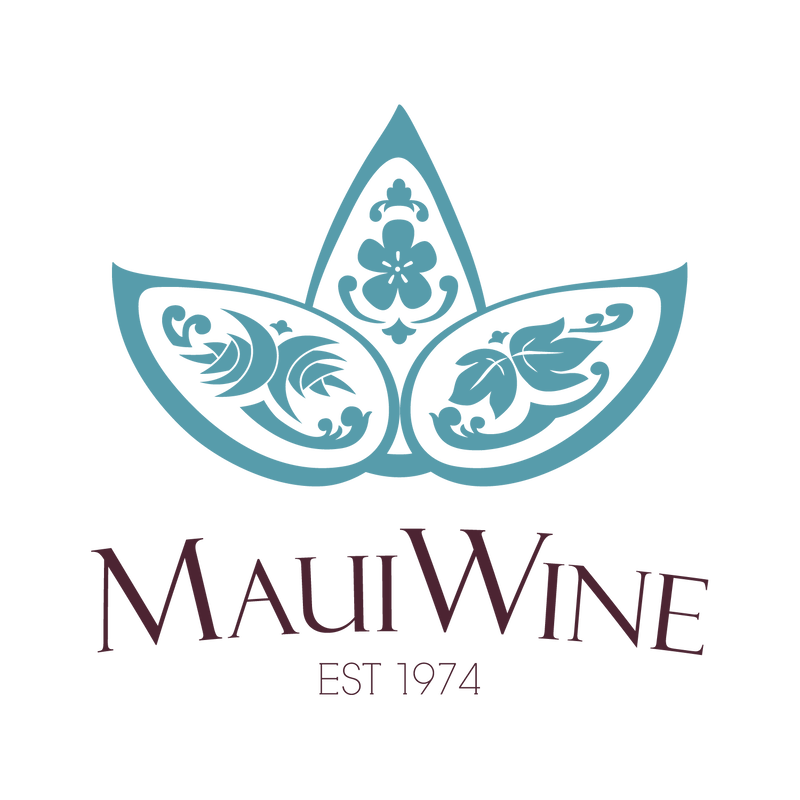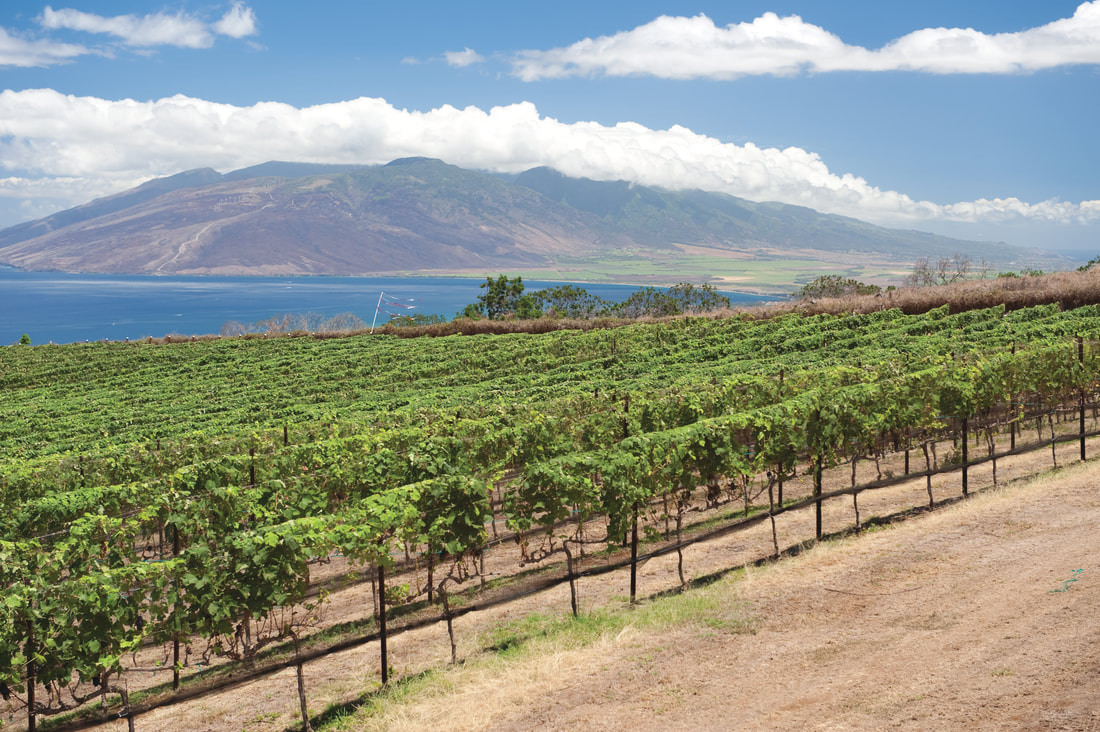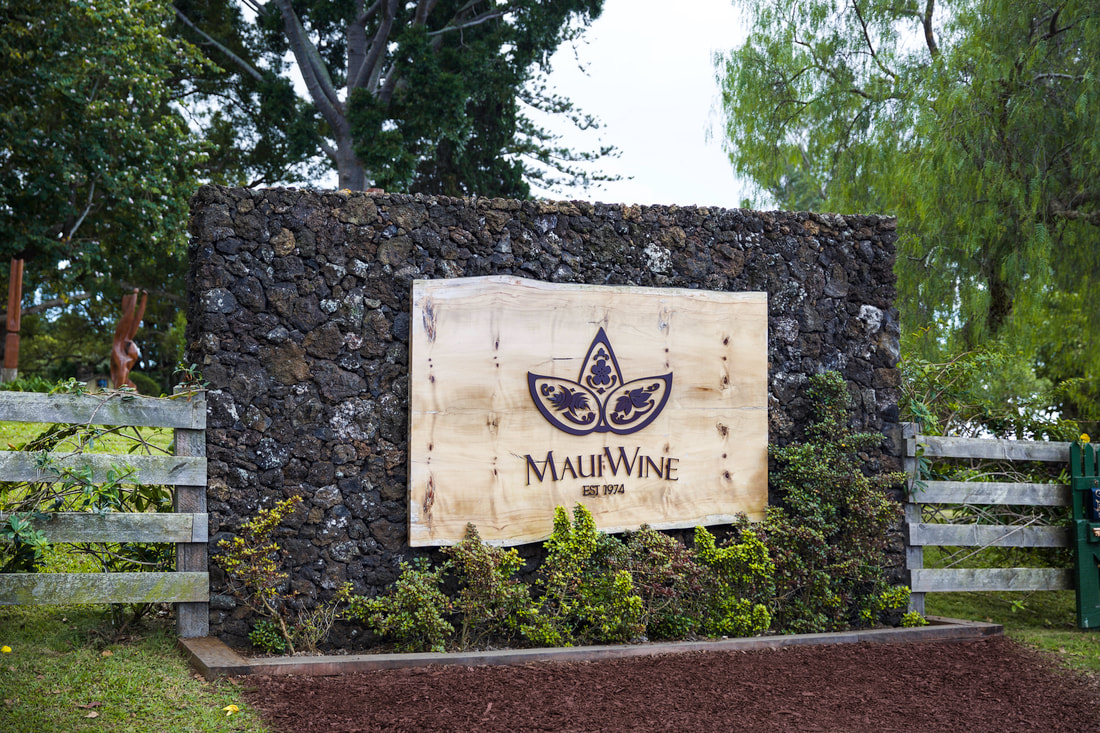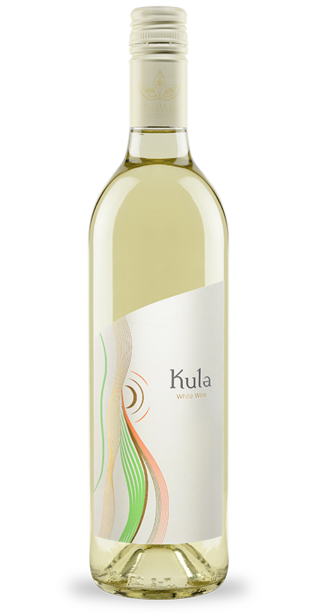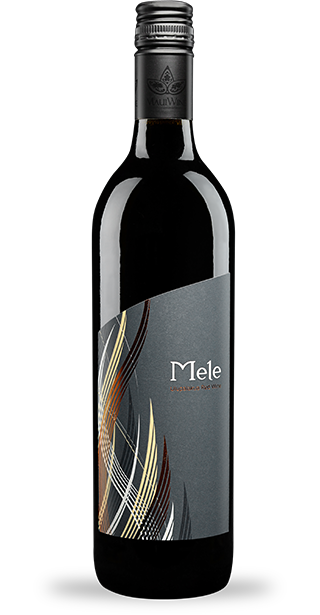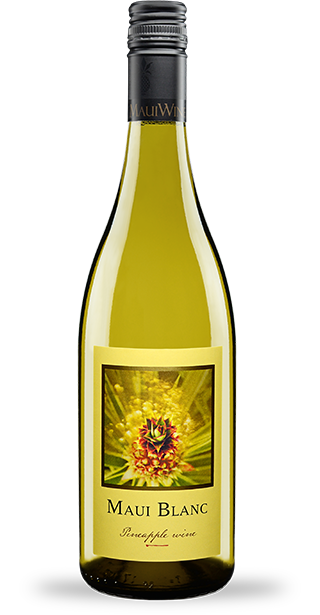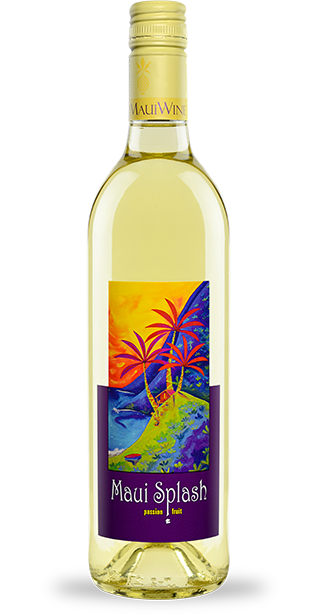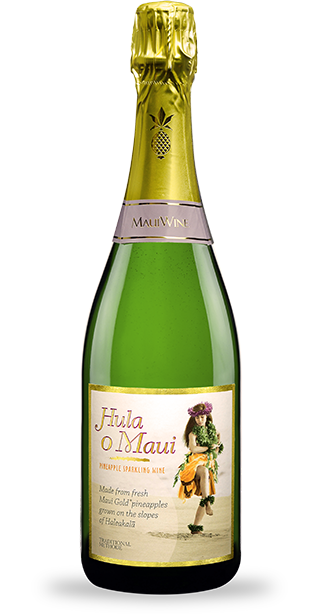|
Winery and Tasting Room
14815 Pi’ilani Hwy, Kula, HI 96790 *Tours Available Hours of Operation Monday-Sunday 10a–5p Phone Number 1-808-878-1266 1-877-878-6058 (Toll Free) https://mauiwine.com/ |
- Subscribe
- Digital Edition
-
Beverage Guide
- Flavor and Cocktail Construction >
- Production Fundamentals >
- Non-Alcoholic Beverages >
-
Beer
>
- Cider >
- Sake
-
Spirits
>
-
Wine
>
- Kamaʻāina Wine Makers >
-
Winemaking
>
- A Guide to: High Sugar Residual Wines
- A Guide to: Post Fermentation Flavor Adjustments
- A Guide to: Post Fermentation Process: Stabilization
- A Guide to: Wine Prefermentation Practices
- A Guide to: Wine Microbes
- A Guide to: Wine Alcoholic Fermentation Physical Environment
- A Guide to: Wine Fermentation Chemical Environment
- A Guide to: Wine Bottling
- A Guide to: Wine Faults
- A Guide to: Wine Polyphenols
- A Guide to: Wine Aroma Compounds: Pt 1
- A Guide to: Wine Aroma Compounds: Pt 2
- A Guide to Viticulture
- Red and White Grape Aroma Compounds
- Wine Styles >
- Business Strategy
- News and Events
- About
- Production Fundamentals
- Flower Aroma Compounds
- Flavor Pairing and Recipe Development
Situated on the slopes of Maui’s Haleakala, 2,000 ft above sea level, lies Ulupalakua, the home of Maui Wine and its vineyards. There, wine is made from estate-grown grapes, including Rhone varietals, and pineapple, Hawaii’s remaining cash crop. To learn more about Maui Wine, Hawaii Beverage Guide had the opportunity to chat with marketing and brand manager, Joseph Hegele, who grew up at the winery.
About the Winery
-
Founding Story
-
Approach to Wine (from Grapes)
<
>
In 1974, C. Pardee Erdman, owner of Ulupalakua Ranch, and Emil Tedeschi, who came from a winemaking family in Calistoga, California, founded what was then known as Tedeschi Winery. Together, they identified the perfect growing location for the vines and figured out how to refit existing buildings on the former Rose Ranch Estate for winemaking. In the late 1980s, Tedeschi returned home to Calistoga, and the business operations were embraced by Paula Hegele, the current president of the company.
According to Hegele, “My mom [who is from Washington] met my father when they were going to school [in Washington], [they] got married, then moved to Hawaii. They would frequently drive out to Ulupalakua. It was a place they loved; it was a relaxing place; it was kind of get away, and it just had an impact on them. Eventually, an opportunity presented itself for her to start working [at Tedeschi Winery], and she worked her way to where she is now, president of the company. One of my younger brothers works at the winery now too, but the three of us grew up working in the vineyard.”
Key People (Founders and anyone else beverage buyers should know)
According to Hegele, “My mom [who is from Washington] met my father when they were going to school [in Washington], [they] got married, then moved to Hawaii. They would frequently drive out to Ulupalakua. It was a place they loved; it was a relaxing place; it was kind of get away, and it just had an impact on them. Eventually, an opportunity presented itself for her to start working [at Tedeschi Winery], and she worked her way to where she is now, president of the company. One of my younger brothers works at the winery now too, but the three of us grew up working in the vineyard.”
Key People (Founders and anyone else beverage buyers should know)
- Paula Hegele, President
- Ian Baldridge, Operations Manager
- Keone Labuanan, Cellar Master
- Bill Long, Winery, Vineyard Engineer
- Tamara Evans, Tasting Room Manager
- Henry Hegele, Sales & Analytics Manager
- Hegele Hegele, Marketing & Branding
- Beth Anderson, Executive Assistant
Maui Wine produces 100% Estate wine and wine made from a blend of non-estate wine and Estate wine. Both are a direct representation of Ulupalakua’s weather. What is produced is dependent on what the growing season provides. Hegele shared, “If you did a vertical tasting of our Syrah, [you’d come to find that] they're unique. We are really proud of having a growing region [with] vintage variations. You embrace that and say, “This was a wet year; these were our challenges.” In fact, 2019 was an awesome year. It was the best year we've had in a long time because it was really, really dry. We had no rot problems. We had a lot of sun exposure. It was the first time that we've actually worried about sunburn on the grapes. Not every year is like that. Sometimes, we'll have a ton of rain. We had a hurricane take out half of the Syrah blocks. We then had to harvest a week earlier, the vines that were laying on the ground, and we had to re-trellis the entire vineyard. That’s farming.”
Though there are no hard rules to winemaking, there are some general philosophies. The Non-Estate wine is made to be a weekday drinking wine, which means that cost is taken into perspective. The wine uses grapes that did not make it into the Estate program, but were still of high quality.
Furthermore, the production of Estate wine and Non-Estate is tailored to Hawaii’s climate. Hegele explained, “We got no business making big, heavy red wines. That's not our climate. We make lighter styles of red, acid-driven wine, and food friendly wines because that's our environment. We're sunshine all year round. It's very rare for me to crave a huge, meaty [cabernet sauvignon] while I'm sitting in Hawaii.”
Though there are no hard rules to winemaking, there are some general philosophies. The Non-Estate wine is made to be a weekday drinking wine, which means that cost is taken into perspective. The wine uses grapes that did not make it into the Estate program, but were still of high quality.
Furthermore, the production of Estate wine and Non-Estate is tailored to Hawaii’s climate. Hegele explained, “We got no business making big, heavy red wines. That's not our climate. We make lighter styles of red, acid-driven wine, and food friendly wines because that's our environment. We're sunshine all year round. It's very rare for me to crave a huge, meaty [cabernet sauvignon] while I'm sitting in Hawaii.”
Ulupalakua Growing Region
-
Climate
-
Soil
<
>
Ulupalakua sits 2000 feet above sea level, which combined with Hawaii’s consistent and temperate climate, provide for minimal diurnal shifts. The temperature never drops below 50 degrees or exceeds the high 80’s. Hegele drew a comparison to California’s weather. “In California, you hear [of] long, hot days, [and] cold nights. That's key for them. We don't have that. What we have is short, cooler days where the sun goes down at 7:30 at the latest. Our temperature doesn't really get above the high 80’s. Whereas in California, it pushes over 100 during the summer. It means that [our grapes] don't ripen as fast, but we get away with that because we don't have really cold nights. [This results in] our diurnal shifts not getting low enough to stop the vines from continuing to move energy and ripen at night and reach maturity without having long hot days. We call it night ripening. This leads to a really long growing season averaging 30 days, if not 45 days longer than what is typical. One of the challenges hotter regions [contend with] is that the grapes will ripen too fast because it's too hot and the days are too long. [This causes] the sugars to go through the roof, the acid will drop out, and you'll harvest before you have maturity or flavor development. Extending the time on the vine is good, and it comes naturally to us because it takes us longer to reach the physiological ripening.”
Ulupalakua’s weather does not come without challenges. The gentle weather patterns cause the vines to lack a traditional dormancy. Hegele explained, “Once you cut off the fruit, after the vines have been growing for seven months, they automatically shut down because of the shock. Our issue is keeping them shut down. If we get good weather, that's easy. The age of the vines [also] comes into play. Our Syrah, which is 16 to 18 years old, has learned its shut down period. Because grapevines are wildly adaptive to their environment, we are seeing a lot of success to them staying shut down. [However], each varietal is different.
Ulupalakua’s weather does not come without challenges. The gentle weather patterns cause the vines to lack a traditional dormancy. Hegele explained, “Once you cut off the fruit, after the vines have been growing for seven months, they automatically shut down because of the shock. Our issue is keeping them shut down. If we get good weather, that's easy. The age of the vines [also] comes into play. Our Syrah, which is 16 to 18 years old, has learned its shut down period. Because grapevines are wildly adaptive to their environment, we are seeing a lot of success to them staying shut down. [However], each varietal is different.
Good winemaking grapes often come from stressful environments. Though Maui Wine’s rich volcanic soil is not devoid of nutrients, the soil is very shallow and quick draining. Hegele explained, “In most areas of the vineyard, we are talking about four inches to maybe a couple of feet of actual topsoil and then you're hitting rocks [and] lava flow. Drainage is incredibly fast. I think that's where we get a lot of our stress. Even if we get rain and a bunch of energy into the soil for the vines to pull from, it doesn't last long because they’ll drain very quickly.”
The Vineyard
-
Planting the Vineyard
-
Precipitation and Irrigation
-
Fertilization of the vineyard
<
>
Planting the Vineyard
The vineyard was initially planted with Carnelian, a tough, high yielding hybrid varietal that would work well in a traditional method sparkling program. However, the vineyard became diseased and required replanting. When deciding what to replant, Hegele explained, “Carnelian was not a marketable varietal because it was so obscure. It was only planted in one other place and, though a fun experiment, we wanted varietals that people were more familiar with.”
This led to the test planting of over a dozen different varietals in 2002 because, according to Hegele, “We have such unique climate and such an odd growing region. You can make all the assumptions in the world about what's going to work and make connections between our climate and other climates and what their growing, but ultimately, until you put it in the ground, you really don't know. Even when you do put it in the ground and start harvesting three-four years [later], those vines aren't even going to tell you what they can do in 10 years. It's a long game.”
Experimentation with the planting of a variety of vines led to success with Syrah. As a result, the winery continued cultivating Rhone varietals.
The vineyard was initially planted with Carnelian, a tough, high yielding hybrid varietal that would work well in a traditional method sparkling program. However, the vineyard became diseased and required replanting. When deciding what to replant, Hegele explained, “Carnelian was not a marketable varietal because it was so obscure. It was only planted in one other place and, though a fun experiment, we wanted varietals that people were more familiar with.”
This led to the test planting of over a dozen different varietals in 2002 because, according to Hegele, “We have such unique climate and such an odd growing region. You can make all the assumptions in the world about what's going to work and make connections between our climate and other climates and what their growing, but ultimately, until you put it in the ground, you really don't know. Even when you do put it in the ground and start harvesting three-four years [later], those vines aren't even going to tell you what they can do in 10 years. It's a long game.”
Experimentation with the planting of a variety of vines led to success with Syrah. As a result, the winery continued cultivating Rhone varietals.
The entire vineyard is drip-irrigated, though consistent rainfall allows for the irrigation system to be used in two limited circumstances: at the beginning of the growing season post pruning and during dry spells. Hegele explained, “We want to give as much energy as we possibly can to the vines to get them to start strongly and to [put] some strength [into] the canopy. Then, [watering the vineyards] typically tapers off unless the particular year requires us to put a little water into [the vineyard]. Then, once you start getting into flowering and fruits, you really don't want to give it too much [water].”
Maui Wine’s main philosophy towards soil maintenance is that “nothing comes out of the vineyard except for the juice.” This means that when the shoots are pruned, the growth from the previous year gets tilled back into the soil. Chickens are also used for insect control and natural fertilizer. “We take care of the soil,” said Hegele. “Although we don't have a specific plan, we don't have to constantly fertilize [the vineyard and we] don't have to dump a bunch of nutrients into the soil. If you care for it properly, it's pretty self-sufficient.”
Grape Harvest
-
Harvest Season
-
Picking
-
Grape Selection
<
>
The vineyard team gets to determine the start of the growing season through pruning. To help with the workload throughout the year, the vineyard is staggered into three time frames so that not everything is happening all at once. The Syrah are typically the first vines to be pruned. Then, approximately three weeks later, the next block is pruned. Hegele admitted, “We don't have a lot of the resources that you would [typically find] in grape growing regions where you can hire an outside crew for big jobs like leafing, pruning or harvesting. It's just us.”
Processing fruit is more difficult as it starts to warm, so the team is in the vineyard at 4:00 a.m. and finishes as quickly as possible.
Maui Wine’s vineyard is carefully curated with the goal of maximizing quality and yield, while taking the best fruit. This starts with grape selection in the vineyard, with team dropping any grapes unsuitable for winemaking because they are under ripe or have rotted. Beyond retaining nutrients within the vineyard, the fruit drop also obviates hauling unnecessary fruit into the winery This is in contrast to a winery, which may utilize machine-harvesting and thus picks everything then sorts the fruit later.
The curation of the vineyard also allows the team to pick grapes at peak ripeness. Because one of the vineyard’s biggest challenges is that fruit develops at different rates, the team will postpone picking particular parts, which allows for more hang time and the concentration of the vine’s energy into the remaining grapes. Hegele explained, “We can pick specific rows of Syrah that are identified [to be used in the barrel-aged program], which call for the cream of the crop. We also make Rosé out of [Syrah]. What we're looking for in a Rosé, which is treated more like white wine, is a lower alcohol [level] and higher acidity. That fruit gets harvested at a completely different [ripeness] than those of red wine, which [requires] more hang time.”
The curation of the vineyard also allows the team to pick grapes at peak ripeness. Because one of the vineyard’s biggest challenges is that fruit develops at different rates, the team will postpone picking particular parts, which allows for more hang time and the concentration of the vine’s energy into the remaining grapes. Hegele explained, “We can pick specific rows of Syrah that are identified [to be used in the barrel-aged program], which call for the cream of the crop. We also make Rosé out of [Syrah]. What we're looking for in a Rosé, which is treated more like white wine, is a lower alcohol [level] and higher acidity. That fruit gets harvested at a completely different [ripeness] than those of red wine, which [requires] more hang time.”
Winemaking Process
(Grape) Winemaking
-
Destemming/Crushing/Skin Contact
-
Fermentation
-
Aging
-
Racking/ Blending/ Filtering/ Bottling
<
>
The amount of skin contact changes from year to year and is based upon the target wine style and the fruit characteristics. Hegele also noted, “Sometimes the wine benefits from longer skin contact, sometimes it doesn’t, it’s a balance and tasting it everyday and pulling it at just the right time is crucial.”
White Wine
No Skin Contact
Red Wine
“Going with the style of being in Hawaii, we don't want to make tannin-heavy wine; we don't want over-extraction. We're looking for brightness and acidity.” said Hegele. Occasionally whole-cluster fermentation is used “when it makes sense” The saignee method is also used to increase the skin-to-juice ratio, boosting color and tannin extraction in the red wines with the remaining juice bled off for rosé.
White Wine
No Skin Contact
Red Wine
“Going with the style of being in Hawaii, we don't want to make tannin-heavy wine; we don't want over-extraction. We're looking for brightness and acidity.” said Hegele. Occasionally whole-cluster fermentation is used “when it makes sense” The saignee method is also used to increase the skin-to-juice ratio, boosting color and tannin extraction in the red wines with the remaining juice bled off for rosé.
Fermentation temperature is typically consistent from year to year. Whites and Rosés, are fermented cold (around 50 degrees Fahrenheit). Red wines are fermented at a much warmer temperature to aid extraction.
Yeast
A variety of yeast is used in fermentation and the choice of yeast depends on what works best for a particular grape during that particular year. Hegele provided the following insight. “We use a spice rack of yeast. We'll use [yeast] that's specific for certain varietals; we also do a lot of experimentation with yeast. We tinker, play, and separate [different wines] as much as possible to help the fruit express itself in different ways; it gives us an opportunity to do some fun stuff with blending [to yield] more complexity.”
Maui Wine, on occasion, will do a wild fermentation. According to Hegele, “[Wild fermentation] can be a scary thing. It's great if it works out, but it can easily turn on you. With our volume it's like, ‘Hey, this is a super clean fruit. Let's take half a ton, let's put it off this side, let's see what happens`` It's a year by year thing.”
Yeast
A variety of yeast is used in fermentation and the choice of yeast depends on what works best for a particular grape during that particular year. Hegele provided the following insight. “We use a spice rack of yeast. We'll use [yeast] that's specific for certain varietals; we also do a lot of experimentation with yeast. We tinker, play, and separate [different wines] as much as possible to help the fruit express itself in different ways; it gives us an opportunity to do some fun stuff with blending [to yield] more complexity.”
Maui Wine, on occasion, will do a wild fermentation. According to Hegele, “[Wild fermentation] can be a scary thing. It's great if it works out, but it can easily turn on you. With our volume it's like, ‘Hey, this is a super clean fruit. Let's take half a ton, let's put it off this side, let's see what happens`` It's a year by year thing.”
The wine is aged in a multitude of ways. Commonly, stainless steel tanks with a micro- oxygenation system are used to help the aging process. Flextank barrels are semi-permeable to oxygen and designed to simulate an oak barrel’s oxygen exchange. They also do pump overs and other methods to get oxygen into the wine.
Oak
According to Hegele, “We don't want to make oaky wines, so we don't use a ton of oak.” When oak is used, wine made from the small batch of grapes deemed “cream of the crop” are barrel-aged. In non-oak barrel aging, the inclusion of staves are used.
“The biggest benefit of oak [barrels] is the transfer of oxygen through the barrel over time. We use neutral oak, so it doesn't impart a ton of oak flavor. We're not going for those vanillas, mochas, or things that you get from new oak. We just put it in the vessel and utilize the fact that wood is porous and it's a beautiful way to age wine,” said Hegele.
The barrel-aged wine is used in the blending program and then bottled. The addition of barrel staves into aging tanks is only used when the winemakers think the wine needs to be rounded out or needs more tannin. When asked about their approach to the addition of oak, Hegele explained, “We'll put it in and we'll taste it everyday and pull it when it’s where we want it. It's like putting a little bit of sugar in a savory dish. It doesn't taste sweet, but it helps the mouth feel, round[s] things out, make[s] things more balanced. That'll be the only time that we really utilize oak in our wines. It's just not our style.”
Oak
According to Hegele, “We don't want to make oaky wines, so we don't use a ton of oak.” When oak is used, wine made from the small batch of grapes deemed “cream of the crop” are barrel-aged. In non-oak barrel aging, the inclusion of staves are used.
“The biggest benefit of oak [barrels] is the transfer of oxygen through the barrel over time. We use neutral oak, so it doesn't impart a ton of oak flavor. We're not going for those vanillas, mochas, or things that you get from new oak. We just put it in the vessel and utilize the fact that wood is porous and it's a beautiful way to age wine,” said Hegele.
The barrel-aged wine is used in the blending program and then bottled. The addition of barrel staves into aging tanks is only used when the winemakers think the wine needs to be rounded out or needs more tannin. When asked about their approach to the addition of oak, Hegele explained, “We'll put it in and we'll taste it everyday and pull it when it’s where we want it. It's like putting a little bit of sugar in a savory dish. It doesn't taste sweet, but it helps the mouth feel, round[s] things out, make[s] things more balanced. That'll be the only time that we really utilize oak in our wines. It's just not our style.”
The maintain product consistency, several different racksing and blendings are doen over the course of 12-16 weeks. The wine is filtered for particulate before bottling.
Méthode Champenoise
(Traditional Method Sparkling Wine)
-
Tirage Aging (Secondary Fermentation)
-
Remuage (Riddling), Disgorging
-
Dossage
-
Corking
<
>
Maui Wine produces approximately 10,000 bottlings per year of sparkling wine made using the méthode champenoise (traditional method), instead of the charmat (tank fermentation) method or force carbonation. The methode champenoise entails adding liqueur de tirage, and a combination of yeast and sugar into a tank containing finished still wine. The wine is then bottled with a plastic bidule that sits at the neck of the bottle that is used to gather the yeast and act as a crown cap (like a beer bottle cap]. The bottles are then laid on their sides to maximize surface area exposed to the yeast. Groups of approximately 500 bottles are then placed into a metal cage, called a riddling box, for mechanical riddling.
During n the riddling process, the wine bottles are turned so that all of the yeast settles into the bidule at the neck of the bottle. Maui Wine does this by forklifting the riddling cages onto mechanical gyro pallets. A computer program is used to signal the gyro on how much to turn the bottles. Mechanical riddling was not always used. “The old school way of hand riddling is how we used to do it,” said Hegele. “I grew up quarter turning bottles for hours in a cement building. Luckily, we're not doing too much of that anymore. We have gyros now. Instead of taking months to riddle [via] the old way, it takes five to seven days, which is fantastic. An entire tirage bottling of 10,000 bottles can be riddled all in the same timeframe so that you minimize variation.”
Once the wine is done aging, it’s disgorged, which is the process of removing the dead yeast from the finished product. This is done by placing the neck of the bottles into a glycol chiller. This freezes the plug at the end of the bottle and creates a “yeast and wine popsicle.” Once the plug is frozen, it's taken off and placed onto the scourging line, similar to a conveyor belt, where each bottle gets its crown cap popped off, allowing the plug of frozen yeast and wine to be shot out the bottle’s neck. The wine bottle is then covered and moved on to the next stage where wine is to be drawn out, making room for the dossage.
Once the wine is done aging, it’s disgorged, which is the process of removing the dead yeast from the finished product. This is done by placing the neck of the bottles into a glycol chiller. This freezes the plug at the end of the bottle and creates a “yeast and wine popsicle.” Once the plug is frozen, it's taken off and placed onto the scourging line, similar to a conveyor belt, where each bottle gets its crown cap popped off, allowing the plug of frozen yeast and wine to be shot out the bottle’s neck. The wine bottle is then covered and moved on to the next stage where wine is to be drawn out, making room for the dossage.
Dossage is the addition of sugar into the wine since during tirage there's no sugar left because the yeast has eaten it all. Hegele points out that “It's very rare to have a sparkling wine with zero residual sugar, that's palatable because it's so acidic. That's where you get those classifications of sparkling wine. [B]rut is a classification of the sugar level.”
The next stage is to fill the bottle back up to 750 milliliters before corking. A wire hood is also placed on the cork to keep it in place.
The Wine
Estate Grapes and the wines they make
-
Syrah
-
Malbec
-
Grenache
-
Chenin Blanc
-
Vigonier
-
Gewurztraminer
<
>
Syrah has been successful because it likes a longer growing season; can do well in warm and cold climates; has long, slender clusters; and has a very good graper per cluster ratio. Hegele noted that “Syrah is the flagship. We feel the entire vineyard and the success that we had was dependent on the success that we had with the Syrah.”
The Malbec vines are approximately eight years old with a handful of the experimentally planted vines being older. Production typically varies between 50 and 100 cases; however, this past year was an exceptional Malbec harvest. Hegele noted, “It was the first year that the fruit set was heavy and consistent. The fruit was extremely healthy and awesome. We harvested, I believe, five times the amount of fruit that we've ever harvested. We're going to be making a lot more Malbec moving forward. I don't want to say that it's going to take over Syrah, but it will be a strong second as far as the reds go.”
Hegele also described the fruit as being “huge berries [and] big clusters.” He mentioned that "Malbec is a varietal that, regardless of the environment, is not going to hide itself. It's inky; the color of it is extremely unique; it stands out, and ours is no different in that regard.”
Hegele also described the fruit as being “huge berries [and] big clusters.” He mentioned that "Malbec is a varietal that, regardless of the environment, is not going to hide itself. It's inky; the color of it is extremely unique; it stands out, and ours is no different in that regard.”
“[Grenache] creates a wine that's very Maui-like. It is really low tannin, super high acid, super fruity, easy drinking fun. That's the style that we want to produce.” (Hegele)
Chenin Blanc (Still wine and Sparkling Blanc de Blanc)
Chenin Blanc is made into both still wine and sparkling wine. Hegele commented, “It is a high-yielder, lunch time wine. [It’s also] one of the most versatile white wines. It can be a dessert wine and it can be a low alcohol, acidic wine. It can be something that you put on oak and lees and made funky and odd. It's really a fun varietal. ” The Estate sparkling undergoes secondary aging between two to three years. “That's our opportunity to play a little bit more with extended tirage.” Said Hegele.
Chenin Blanc is made into both still wine and sparkling wine. Hegele commented, “It is a high-yielder, lunch time wine. [It’s also] one of the most versatile white wines. It can be a dessert wine and it can be a low alcohol, acidic wine. It can be something that you put on oak and lees and made funky and odd. It's really a fun varietal. ” The Estate sparkling undergoes secondary aging between two to three years. “That's our opportunity to play a little bit more with extended tirage.” Said Hegele.
“It's awesome. It's really difficult to grow, but it grows really well in Maui, which is funny.” (Hegele)
Gewurztraminer
“It does not yield a lot of fruit. [It has] tiny clusters. It doesn't rot. Our biggest challenge in the vineyard is rain at the wrong time, [though] that’s no different than any other vineyard in the world. You're at the mercy of mother nature.
We have rot problems lowering our yield because we lose fruits to it. But Gewurz doesn't rot, which is awesome, but it doesn't yield very much either. It's been in the ground six years now. It's smaller and it doesn't grow as vigorously. It's going to take a lot longer for us to see what it is capable of, but like the rest of the vineyard, it's an experiment that we're going to see through.” (Hegele)
“It does not yield a lot of fruit. [It has] tiny clusters. It doesn't rot. Our biggest challenge in the vineyard is rain at the wrong time, [though] that’s no different than any other vineyard in the world. You're at the mercy of mother nature.
We have rot problems lowering our yield because we lose fruits to it. But Gewurz doesn't rot, which is awesome, but it doesn't yield very much either. It's been in the ground six years now. It's smaller and it doesn't grow as vigorously. It's going to take a lot longer for us to see what it is capable of, but like the rest of the vineyard, it's an experiment that we're going to see through.” (Hegele)
Estate Blends
-
Rose
-
SGMV
<
>
Grapes: Syrah, Grenache
Grenache is harvested, crushed to tank and allowed to extract color for a part of the day before a portion of the volume is bled off using the saignée methode. The juice is then cold settled for two days before initiating a slow and cold fermentation. Following fermentation, the wine is settled on lees for several weeks. The Grenache is then blended in to boost color and enhance fruit character.
Grenache is harvested, crushed to tank and allowed to extract color for a part of the day before a portion of the volume is bled off using the saignée methode. The juice is then cold settled for two days before initiating a slow and cold fermentation. Following fermentation, the wine is settled on lees for several weeks. The Grenache is then blended in to boost color and enhance fruit character.
Grapes: Blend of Grenach, Syrah, Malbec, Viognier
Each varietal is hand-harvested and fermented in a combination of open-top bins and stainless steel tanks. After fermentation, a portion of the blend is aged in older American and French oak barrels to further layer the complexity in the four varietal blend. The Syrah is selected for its fruit-forward character, the Grenache for its aromatic uplift, the Malbec for its hearty structure, and the Viognier for its bright flavors and fresh acidity.
Each varietal is hand-harvested and fermented in a combination of open-top bins and stainless steel tanks. After fermentation, a portion of the blend is aged in older American and French oak barrels to further layer the complexity in the four varietal blend. The Syrah is selected for its fruit-forward character, the Grenache for its aromatic uplift, the Malbec for its hearty structure, and the Viognier for its bright flavors and fresh acidity.
Rose Ranch:
Non-Estate Wine Blended with Estate Wine
-
Grape Sourcing
-
Kula
-
Mele
-
Lokelani
<
>
Grapes sourced from the mainland
Rough wine, instead of grapes and grape juice, are shipped from the mainland because both grapes and grape juice are too volatile. To produce the wine, Maui Wine works directly with the mainland growers and will sometimes do custom blends. Once on Maui, the wine goes into tanks before it is blended with the wine made from estate fruit.
Rough wine, instead of grapes and grape juice, are shipped from the mainland because both grapes and grape juice are too volatile. To produce the wine, Maui Wine works directly with the mainland growers and will sometimes do custom blends. Once on Maui, the wine goes into tanks before it is blended with the wine made from estate fruit.
Lokelani is a blend of Pinot Noir and Chardonnay. “Stylistically, we want a fresh, fruit-forward, acidic sparkling wine. It typically is in tirage for 16 to 18 months. You're getting a little bit of that nutty/buttery thing going, but not too much, mostly for mouthfeel development,” said Hegele. Estate Grenache is then used in the dossage to give the wine its subtle pink color.
Wine Availability
The Estate Wines rotate through vintage and certain releases. Because they're smaller in quantity, they sell out faster. For product availability, contact Maui Wine directly. The Rose Ranch Wine is regularly available.
The Estate Wines rotate through vintage and certain releases. Because they're smaller in quantity, they sell out faster. For product availability, contact Maui Wine directly. The Rose Ranch Wine is regularly available.
Pineapple Wine
“If wine is a representation of agriculture, pineapple is an iconic piece of Hawaii agriculture. For us to make wine out of [pineapple], it just makes complete sense", said Hegele.
-
Pineapple Wine History and Background
-
Pineapple Wine History
<
>
The winery was founded with the intent of having a sparkling program. When the vineyard was first planted, there was downtime since grapes take time to grow. Pineapple wine was discovered almost by accident. While waiting for the vineyards to mature, the winery wanted to figure out the equipment and techniques required of a traditional method sparkling program. As a result, they took the most abundant fruit juice they could find, pineapple, and used the pineapple juice for primary fermentation and méthode champenoise. The result was a surprisingly tasty product. However, there was a twenty year period when the pineapple sparkling wine was paused and only still-wine was produced.
Though most know wine as being made from grapes, according to the Alcohol and Tobacco Tax and Trade Bureau and the Code of Federal Regulations Title 27, Chapter 24.1, it states “When used without qualification, the term includes every kind (class and type) of product produced on bonded wine premises from grapes, other fruit (including berries), or other suitable agricultural products and containing not more than 24 percent of alcohol by volume.” Given this, cider makers and perry makers have wine licences. Furthermore, “fermented pineapple juice” doesn’t sound as appealing. As the desire for unique products rises, and with the increased demand of cider, Maui Wine has seen an uptick in demand for pineapple wine.
Ingredients
-
Maui Gold Pineapple
-
Yeast
<
>
Maui Gold Pineapple
Pineapple is selected with an emphasis on the fruit’s aromatics qualities. Harvesting is year-round, and the fruit is crushed based on what is needed according to sales expectations. Typically, about 84,000 pounds of pineapple are crushed per month. “Grape wines are harvested once a year,” says Hegele. “You've got ‘X’ amount of fruit coming from your vineyard, you buy fruit from other vineyards, and you can pile in your volumes that one time. But pineapple wine is a year round fruit and its quick to bottle, so we can actually crush pineapple based on demand.”
Pineapple is selected with an emphasis on the fruit’s aromatics qualities. Harvesting is year-round, and the fruit is crushed based on what is needed according to sales expectations. Typically, about 84,000 pounds of pineapple are crushed per month. “Grape wines are harvested once a year,” says Hegele. “You've got ‘X’ amount of fruit coming from your vineyard, you buy fruit from other vineyards, and you can pile in your volumes that one time. But pineapple wine is a year round fruit and its quick to bottle, so we can actually crush pineapple based on demand.”
A strong wine yeast, as well as some enzymes, are used to break down some of the sugars and make them easier to ferment. According to Hegele, “We use a big aggressive yeast with pineapple, the fermentation is extremely important because it can [give] off aromas really quickly,” and if that happens, “it’s going to be in your face.”
Production Process
Crush to bottle is 5 months.
-
Juicing
-
Fermentation
<
>
Fermentation
Fresh pineapple juice is pumped into 4000-gallon stainless steel tanks and cold fermented at approximately the same temperature as the wineries’ white wine for over 14 days. To maintain temperature control, fermentation occurs in jacketed stainless steel tanks. Hegele shared, “Fermentation is key for us in making a good product. If you have a ferment that is struggling and the yeast are dying sooner than they should [because] it's an inhospitable environment, it can have really negative effects on pineapple. The aromatics in pineapple wine are so strong that if you have any off aromas, it's going to be in your face.”
Once fermentation is complete, the wine is then bottled as Maui Blanc. Maui Splash and Hula o Maui further undergo processes. Read more in the next section.
Fresh pineapple juice is pumped into 4000-gallon stainless steel tanks and cold fermented at approximately the same temperature as the wineries’ white wine for over 14 days. To maintain temperature control, fermentation occurs in jacketed stainless steel tanks. Hegele shared, “Fermentation is key for us in making a good product. If you have a ferment that is struggling and the yeast are dying sooner than they should [because] it's an inhospitable environment, it can have really negative effects on pineapple. The aromatics in pineapple wine are so strong that if you have any off aromas, it's going to be in your face.”
Once fermentation is complete, the wine is then bottled as Maui Blanc. Maui Splash and Hula o Maui further undergo processes. Read more in the next section.
Pineapple Wines
-
Maui Blanc
-
Maui Splash
-
Hula o Maui
<
>
“I think making a pineapple sparkling wine, with the winery being in Maui, is the most fun and most appropriate wine we make. It's pineapple, it's sparkling, and it's very Maui.” Said Hegele.
Aging
The still pineapple wine then undergoes secondary fermentation in the exact same Méthode Champenoise style used in the grape sparkling wine. Secondary fermentation of the pineapple wine lasts between six to ten months. According to Hegele, “When you start getting closer to a year, you start getting a lot of break down in the dead yeast that's still sitting in the bottle. It starts giving you those more traditional champagne and older sparkling characteristics where it's buttery, bready and nutty. We want the pineapple wine to smell and taste like fresh pineapple. We don't want too much of [the aging] to influence the wine, but those six to eight months (nine months for the pineapple wine) of sitting on yeast will give [the wine] mouth, feel, texture and some other positive aspects without imparting some of those bready characteristics common in sparkling wine.”
Aging
The still pineapple wine then undergoes secondary fermentation in the exact same Méthode Champenoise style used in the grape sparkling wine. Secondary fermentation of the pineapple wine lasts between six to ten months. According to Hegele, “When you start getting closer to a year, you start getting a lot of break down in the dead yeast that's still sitting in the bottle. It starts giving you those more traditional champagne and older sparkling characteristics where it's buttery, bready and nutty. We want the pineapple wine to smell and taste like fresh pineapple. We don't want too much of [the aging] to influence the wine, but those six to eight months (nine months for the pineapple wine) of sitting on yeast will give [the wine] mouth, feel, texture and some other positive aspects without imparting some of those bready characteristics common in sparkling wine.”
Other Fruit Wine
Lehua
Lehua was developed when a local farm had excess fruit “with no home.” Maui Wine brought the fruit in and created a raspberry dessert wine. The dessert wine is regularly made with raspberries sourced from Lynden, Washington when local raspberries are not available. To produce the product, fresh, whole raspberries are brought into the winery and fermented. In the final stage, a neutral grape spirit is added to suspend fermentation so that desired residual sugars remain to fortify the wine.
Lehua was developed when a local farm had excess fruit “with no home.” Maui Wine brought the fruit in and created a raspberry dessert wine. The dessert wine is regularly made with raspberries sourced from Lynden, Washington when local raspberries are not available. To produce the product, fresh, whole raspberries are brought into the winery and fermented. In the final stage, a neutral grape spirit is added to suspend fermentation so that desired residual sugars remain to fortify the wine.
Up Next
*
Maui Wine is looking to grow additional varietals. “Right now, we're just single varietal, single vintage, but we're thinking about planting some different [veritials] that might yield ingredients to create some [new] blends and some fun [products].” Said Hegele.
Maui Wine is looking to grow additional varietals. “Right now, we're just single varietal, single vintage, but we're thinking about planting some different [veritials] that might yield ingredients to create some [new] blends and some fun [products].” Said Hegele.
MENU
|
HOME
|
SUBSCRIBE |
DIGITAL
|
BEVERAGE
|
NEws and
|
ABOUT |
CONTACT |
©2022 Hawaii Beverage Guide
Terms & Conditions
Terms & Conditions
- Subscribe
- Digital Edition
-
Beverage Guide
- Flavor and Cocktail Construction >
- Production Fundamentals >
- Non-Alcoholic Beverages >
-
Beer
>
- Cider >
- Sake
-
Spirits
>
-
Wine
>
- Kamaʻāina Wine Makers >
-
Winemaking
>
- A Guide to: High Sugar Residual Wines
- A Guide to: Post Fermentation Flavor Adjustments
- A Guide to: Post Fermentation Process: Stabilization
- A Guide to: Wine Prefermentation Practices
- A Guide to: Wine Microbes
- A Guide to: Wine Alcoholic Fermentation Physical Environment
- A Guide to: Wine Fermentation Chemical Environment
- A Guide to: Wine Bottling
- A Guide to: Wine Faults
- A Guide to: Wine Polyphenols
- A Guide to: Wine Aroma Compounds: Pt 1
- A Guide to: Wine Aroma Compounds: Pt 2
- A Guide to Viticulture
- Red and White Grape Aroma Compounds
- Wine Styles >
- Business Strategy
- News and Events
- About
- Production Fundamentals
- Flower Aroma Compounds
- Flavor Pairing and Recipe Development

